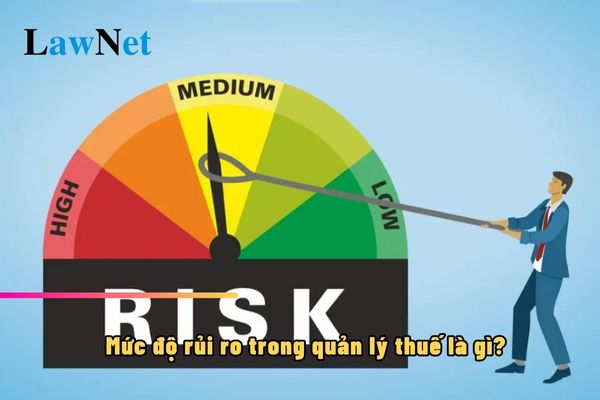What is the risk level in tax management in Vietnam? What are the classification methods?
What is the risk level in tax management in Vietnam?
According to Clauses 9 and 10, Article 3 of Circular 31/2021/TT-BTC, the provisions are as follows:
- The risk level is the severity of the risk determined based on the combination of the frequency and consequences of the risk.
- The criteria for classifying risk levels are the standards used to evaluate and classify risk levels in tax management.
Thus, it can be seen that the risk level is the severity of the risk determined based on the combination of the frequency and consequences of the risk.
Simultaneously, the risk level in tax management will be classified based on the standards used to evaluate and classify risk levels in tax management.

What is the risk level in tax management in Vietnam? What are the classification methods? (Image from the Internet)
What are the 3 methods for classification of taxpayer risks in tax management in Vietnam?
According to Article 5 of Circular 31/2021/TT-BTC, the 3 methods for classification of taxpayer risks include:
The level of tax law compliance and taxpayer risk levels are determined by one or a combination of the following methods:
Method [1] Scoring and classifying according to points.
Method [2] Machine learning method.
Method [3] Ranking by category method.
What are 8 risk management rules in tax management in Vietnam?
According to Article 4 of Circular 31/2021/TT-BTC, the 8 risk management rules in tax management include:
Rule 1. Applying risk management ensures the effectiveness and efficiency of tax management; encourages and facilitates taxpayers to voluntarily comply with tax laws and tax management while preventing, detecting, and promptly handling violations of tax laws and tax management.
Rule 2. Risk management information is collected from internal and external sources of the tax authority (including information from abroad) in accordance with the law; centrally managed at the General Department of Taxation through an information technology application system and processed, shared, and provided to tax authorities at all levels and other state management agencies for tax management purposes in accordance with the law.
Rule 3. The assessment and classification of the level of tax law compliance and taxpayer risk levels are automatically and periodically performed based on one or a combination of the methods stipulated in this Circular, based on legal provisions, tax management procedures, and operational measures, taxpayer segmentation, criteria set forth in this Circular, and taxpayer databases.
Rule 4. Based on the results of the assessment of tax law compliance, classification of taxpayer risk levels, information on tax management support applications of the tax authority, signs of violations, and other risk signals provided at the decision-making time, the tax authority shall:
+ Decide on inspections, audits, monitoring, and application of appropriate operational measures.
+ Develop an overall compliance enhancement plan in line with the resources of the tax authority based on the analysis of the nature of behavior, causes, and scale of each tax law compliance level and risk level.
Rule 5. In the event of full compliance with legal provisions, regulations in this Circular, and guidance on risk management, tax officials are exempt from individual liability in accordance with legal provisions.
Rule 6. In the event of a malfunction or failure to meet risk management requirements as stipulated in this Circular, risk management is manually implemented through the approval of proposed documents or documents signed and issued by authorized persons applying tax management measures as stipulated in the Tax Management Law and guiding documents.
Rule 7. In the event of changes in information leading to changes in the assessment results of tax law compliance and taxpayer risk levels, and the risk management application has not automatically adjusted the compliance level and risk level, the assessment result updates are manually performed by officials after approval by authorized persons.
Rule 8. The results of applying operational measures corresponding to risk rankings must be fully and accurately updated into the tax management support applications of the tax authority or risk management applications for each specific case to serve the completion and implementation of tax law compliance assessments and taxpayer risk classifications in the next period.

